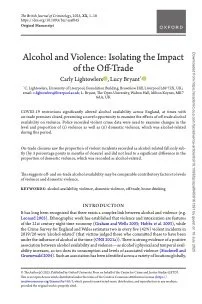By Richard Bade, Bradley S. Simpson, Maulik Ghetia, Lynn Nguyen, Jason M. White, Cobus Gerber
Aim: To assess the effects of social distancing and social isolation policies triggered by COVID-19 on alcohol consumption using wastewater analysis in Adelaide, South Australia.
Design: Longitudinal quantitative analysis of influent wastewater data for alcohol concentration.
Setting: Adelaide, South Australia.
Participants: Wastewater catchment area representative of 1.1 million inhabitants.
Measurements: Twenty-four hour composite influent wastewater samples were collected from four wastewater treatment plants in Adelaide, South Australia for 7 consecutive days (Wednesday–Tuesday) every 2 months from April 2016–April 2020. The alcohol metabolite ethyl sulfate was measured in samples using chromatography–tandem mass spectrometry. Data were population-weighted adjusted with consumption expressed as standard drinks/day/1000 people. Weekly consumption and weekend to mid-week consumption ratios were analysed to identify changes in weekday alcohol use pattern.
Findings: Estimated weekend alcohol consumption was significantly lower (698 standard drinks/day/1000 people) after self-isolation measures were enforced in April 2020 compared with the preceding sampling period in February 2020 (1047 standard drinks/day/1000 people), P < 0.05. Weekend to midweek consumption ratio was 12% lower than the average ratio compared with all previous sampling periods. April 2020 recorded the lowest alcohol consumption relative to April in previous years, dating back to 2016.
Conclusions: Wastewater analysis suggests that introduction of social distancing and isolation policies triggered by COVID-19 in Adelaide, South Australia, was associated with a decrease in population-level weekend alcohol consumption.
Addiction, Volume116, Issue6. June 2021. Pages 1600-1605















